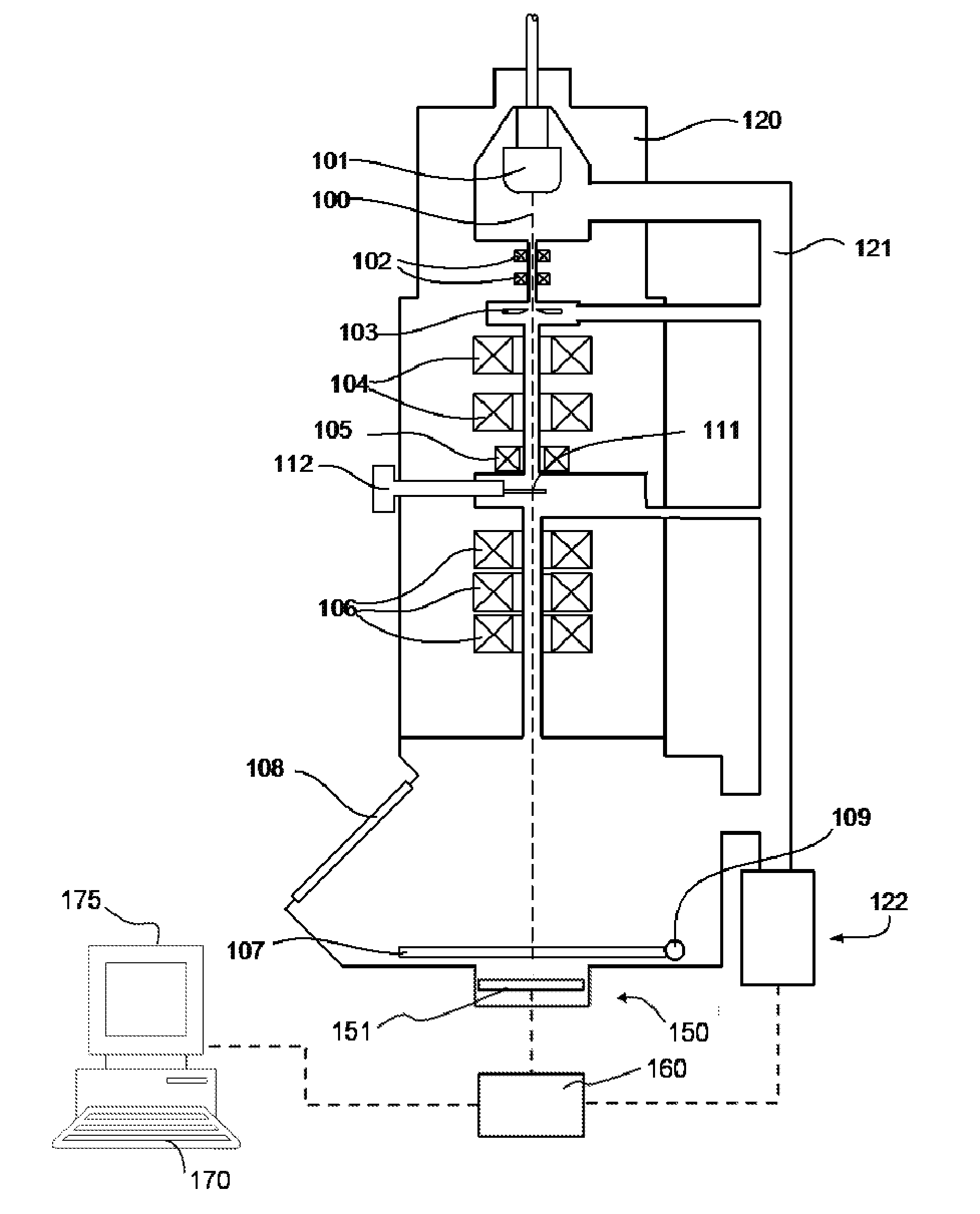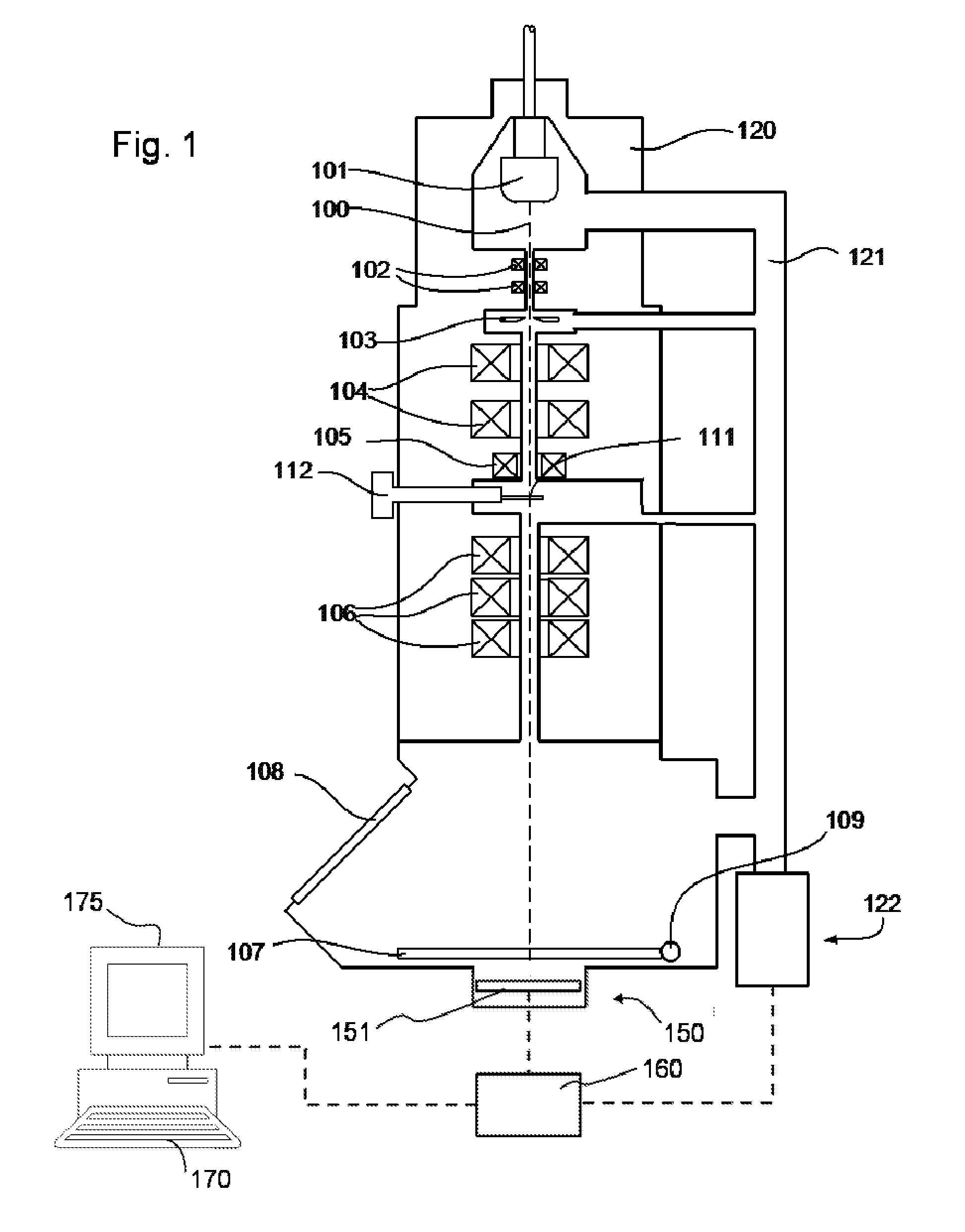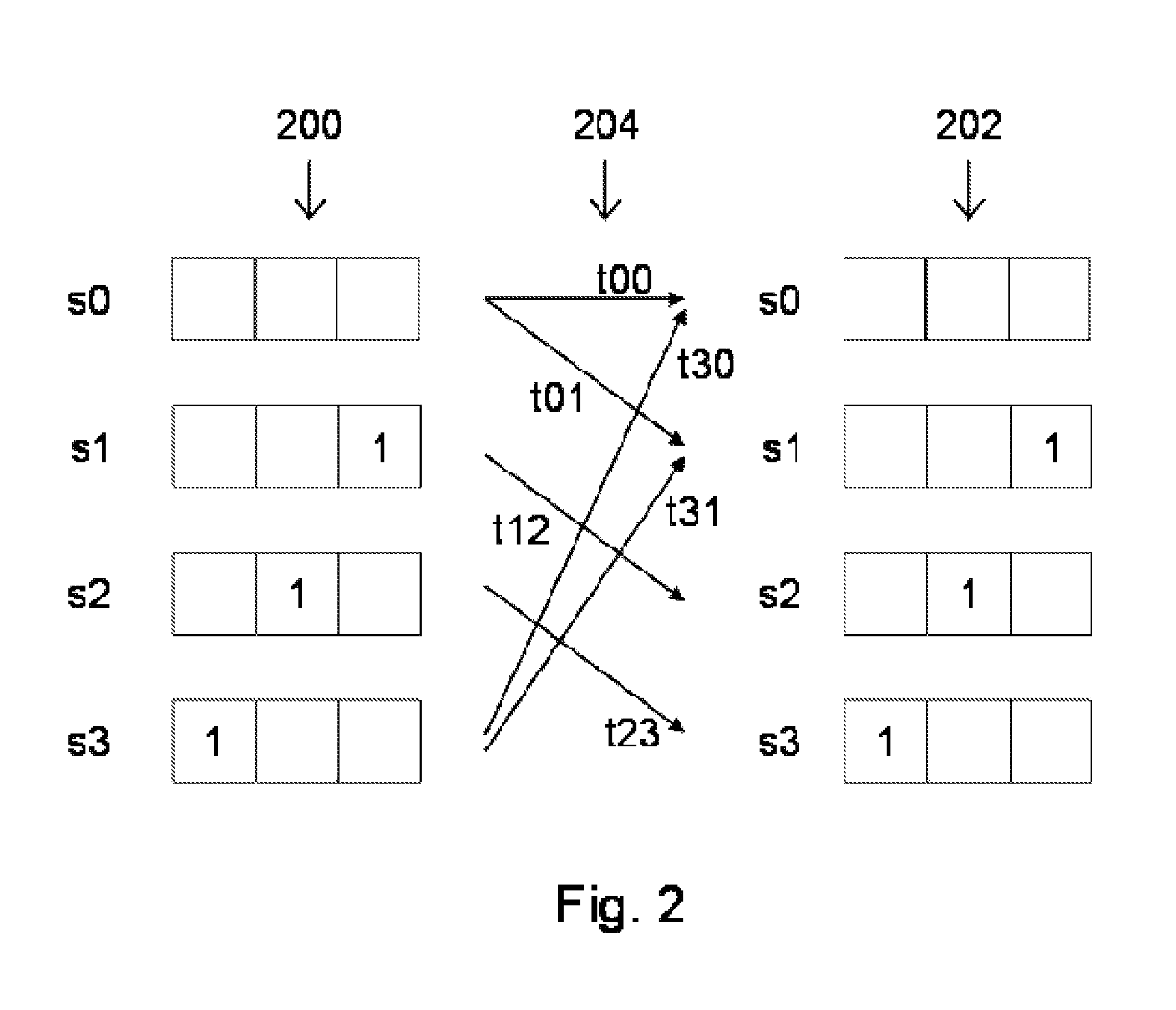Method for determining a reconstructed image using a particle-optical apparatus
a particle-optical apparatus and image-reconstruction technology, applied in image enhancement, instruments, nuclear engineering, etc., can solve the problems of loss of mtf and thus resolution, snr and modulation transfer function may still limit the performance of the detector, and image improvement technologies like image deconvolution are not very successful in recovering from this noise and point spread function. to achieve the effect of improving the quality of an imag
- Summary
- Abstract
- Description
- Claims
- Application Information
AI Technical Summary
Benefits of technology
Problems solved by technology
Method used
Image
Examples
second embodiment
[0108]FIG. 14 relates to a first further embodiment wherein a PSF is used on a 3×3 area. The PSF is shown in dashed form with reference number 569. The plurality of states 560 of FIG. 14 comprises one state 561 without any electrons; six different states 562 with one electron, on six different positions; six states 563 with two electrons on a single position within a state (or one double energy electron, cf. the first and second embodiment of the one-dimensional examples given above) but different between states; and, optionally, fifteen different states 564 with two electrons at different positions.
[0109]FIG. 15 relates to a second further embodiment wherein the same PSF=(121)2 is used, but the states are defined based on a cross-shaped area of 1+3+1 pixels. The PSF is shown in dashed form with reference number 579. The plurality of states 580 of FIG. 15 comprises one state 571 without any electrons; four different states 582 with one electron, on four different positions; four sta...
third embodiment
[0111]It will be appreciated that, similarly to the third embodiment described with reference to FIG. 9, the Viterbi Decoder may also for the two-dimensional PSF, employ a plurality of iterations using a different multiplicity of electrons, or a different energy bin, per iteration.
[0112]FIG. 16-FIG. 17 schematically illustrate the operation of a two-dimensional method using Viterbi Detection according to again a further embodiment of the invention, similarly to the embodiments of FIG. 10-FIG. 15, but with a wider Point Spread Function.
[0113]FIG. 16 schematically shows a two-dimensional semiconductor sensor of a plurality of pixels arranged in a matrix 600, organized in a plurality of columns (of which 15 are shown; not numbered) and a plurality of rows of which rows numbered R0-R12 are shown. Four electrons are incident on the sensor, resulting in four regions on 5×5 pixels, denoted by 601, 602, 603 and 604. The electron hole pairs generated by each of the electrons diffuses to gene...
embodiment 661
[0116]Embodiment 661 schematically indicates states having one, or in further embodiments more than one, of fifteen different positions which may have zero, one or a plurality of electrons. Embodiment 662 schematically indicates states having one, or in further embodiments more than one, of thirteen different positions which may have zero, one or a plurality of electrons. Embodiment 663 schematically indicates states having one, or in further embodiments more than one, of nine different positions which may have zero, one or a plurality of electrons.
[0117]FIG. 18A and FIG. 18B schematically illustrates frequency of occurrence of a signal level from a pixel when one electron is incident on the pixel of a typical semiconductor sensor. Signal level is increasing along the horizontal axis, relative frequency of occurrence is increasing along the vertical axis. Curve 702 indicates the frequency of occurrence of the signal level. Curve 702 is approximately a Landau-distribution. Curve 702 ...
PUM
 Login to View More
Login to View More Abstract
Description
Claims
Application Information
 Login to View More
Login to View More - R&D
- Intellectual Property
- Life Sciences
- Materials
- Tech Scout
- Unparalleled Data Quality
- Higher Quality Content
- 60% Fewer Hallucinations
Browse by: Latest US Patents, China's latest patents, Technical Efficacy Thesaurus, Application Domain, Technology Topic, Popular Technical Reports.
© 2025 PatSnap. All rights reserved.Legal|Privacy policy|Modern Slavery Act Transparency Statement|Sitemap|About US| Contact US: help@patsnap.com



